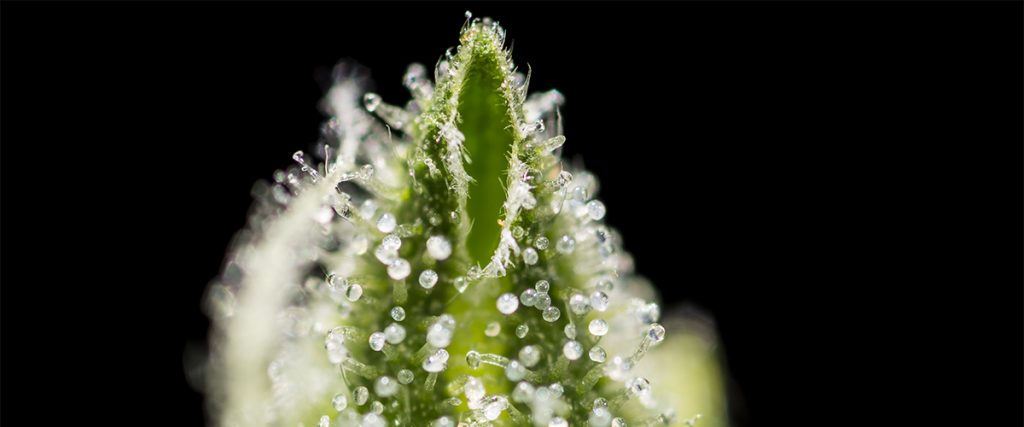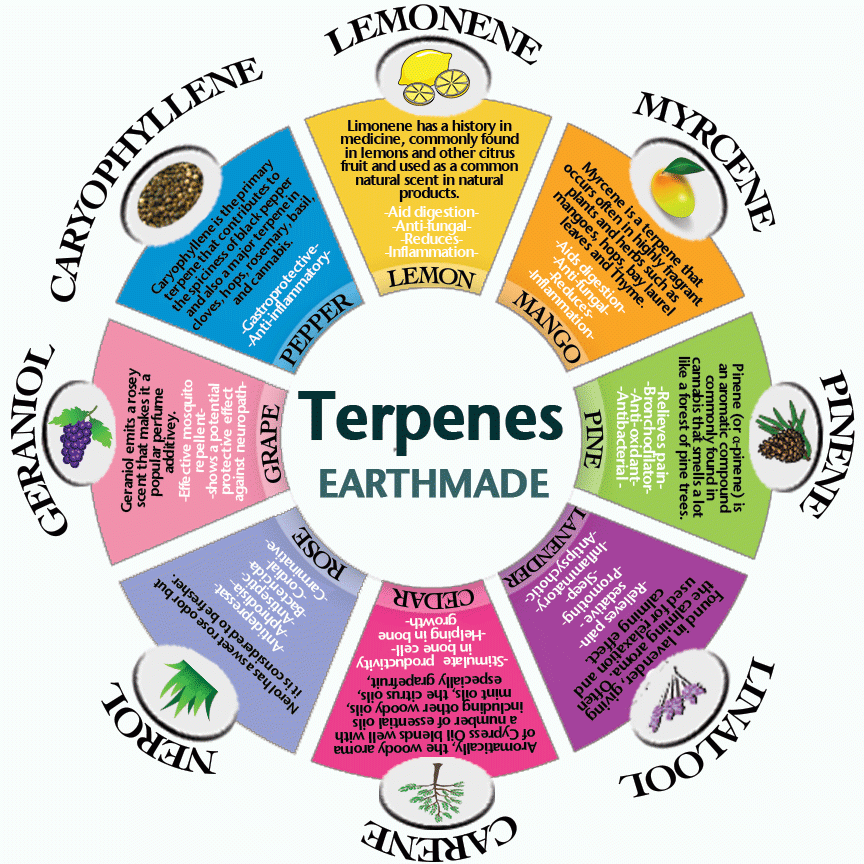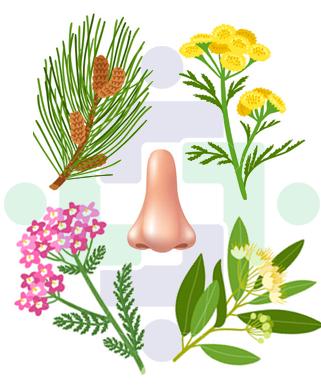What are terpenes and why do we use them?


Terpenes are a large and diverse class of organic compounds, produced by a variety of plants, and by some insects.[1][2] They often have a strong odor and may protect the plants that produce them by deterring herbivores and by attracting predators and parasites of herbivores.[Terpenes are responsible for creating the unique aroma of each individual plant. Especially found in cannabis strains. Terpenes can also be considered a scent finger print for every plant. They also provide therapeutic benefits like their cannabinoid partners, THC and CBD.
The science of terpenes is unique in it own like many things in nature. Terpenes are aromatic oils with distinctive flavors like citrus, berry, mint, and pine.
If you are familiar with “essential oils” you already have some experience with terpenes. Terpenes are found in high quantities in various essential oils. For example, limonene is in the essential oil of lemons and limes, alpha and beta-pinene are found in the essential oil of pine needles. The terpenes in these essential oils contribute to the uplifting effects you experience if you smell the rind of a lemon or walk through a pine forest. Likewise, the terpene linalool predominates the essential oil of lavender, and is known for creating feelings of relaxation and ease. All of these terpenes, and thousands more, are found in high concentrations in the bud of cannabis.

Terpenes are like the personality of each plant. “Nobody likes a person without personality, said Ed Rosenthal, leading cannabis horticulture author.
Terpenes also produce a wide range of medical effects. There are at least 80-100 terpenes unique to the cannabis plant and 20,000 identified terpenes and the combination of these chemicals and cannabinoids is responsible for the effects one may feel after utilizing cannabis. Each terpene have their own unique smell and effect.
Terpenes have a unique ability to interact with our endocannabinoid receptors. Different terpenes may help to induce sleep and relax muscles while others reduce stress and elevate mood, or reduce inflammation and increase energy.

terpenes work together with cannabinoids, in a process known as the entourage effect. The Entourage Effect is the results produced from the synergistic interaction of the cannabinoids, flavonoids, terpenes, and fatty acids naturally found in cannabis. When these natural occurring plant components come together they create a synergistic effect. The fascination in blending specific terpenes with specific molecules is endless and will produce different effects as each combination effects our endocannabinoid system differently.

There are 2 types of terpenes out their. Plant derived terpenes or synthetic lab made terpenes. Plant derived terpenes can come from cannabis or other plants that are not cannabis.
Terpenes may also play a key role in differentiating the effects of various cannabis strains, but more studies are needed to understand how.
Stephen Rechif, a San Francisco dispensary operator of The Bloom Room and a veteran cultivator. Says “Terpenes are absolutely the driving force behind the diverse effects of cannabis,”
With that being said tho research is continuously being developed we can conclude that terpenes do have differentiating effects on the endocannabinoid system which overall effects the body, mind, and spirit.
Below are a few common terpenes, their aroma, and effect.
Myrcene
Myrcene is one of the terpenes frequently found in cannabis. Its aroma is distinct, herbal and citrusy in nature — which is fitting, as it can also be found in fruits like mango. Dr. Russo’s study, in noticing myrcene’s incredibly sedating effect and making note of studies that showed it as a potential muscle relaxant in mice, said that by working in entourage with THC it “may produce the ‘couch-lock’ phenomenon of certain chemotypes that is alternatively decried or appreciated by recreational cannabis consumers.”
In addition to sedative properties, myrcene is said to be an effective anti-inflammatory, as well as an analgesic. Perhaps most interestingly, the Konkuk University research suggested that the myrcene they studied from a Korean forest showed potential to be cytotoxic to certain tumor cell lines.
Linalool
Linalool can be found in certain cannabis strains, but it is also a naturally occurring terpene often found in lavender. Its strong aroma is floral but has an unmistakable spice to it as well. Often used in essential oils for aromatherapy purposes, linalool, like myrcene, is said to have sedative properties.
One standout effect studies have suggested linalool could have is its ability to help with convulsions in seizures. Medical marijuana’s use in reducing seizures has been a major driver of legalization.
Linalool’s relaxing properties are also said to spread to being therapeutic in treatments of depression and anxiety, as well as stress.
Pinene
Pinene, true to its name, gives off a pine aroma — and it can be found in pine needles and conifer trees. Like myrcene, studies have suggested that it has great potential as an anti-inflammatory. Dr. Russo’s study also noted evidence that it could provide relief as a bronchodilator, helping conditions like asthma.
What was also noticed about pinene was that, as an acetylcholinesterase inhibitor, it exhibited the ability to help with memory, as well. Russo suggested it may work as a way to counteract short-term memory loss from too much THC.
At Konkuk University, they found a correlation between pinene use and preventing tumor cells from metastasizing. Certain pinene compounds were also seen as having potential in a chemotherapeutic sense, showing cytotoxic tendencies against cancer cells.
Limonene
With an aggressively citrusy aroma, evoking lemon in particular, it’s no surprise that in addition to cannabis, limonene can be found in citrus fruits — helping provide that scent. It’s incredibly abundant in nature, and even if cannabis research is limited, there has been research on citrus oils to suggest there are positive properties in it.
One of limonene’s purported abilities is to assist with depression and anxiety, and the fragrance given off is associated with an elevated mood. Antioxidant properties in limonene is said to help with inflammation in the lungs. Researchers have also found that limonene can cause apoptosis in cancer cells and can help prevent them from proliferating.
Humulene
Humulene gives off an especially earthy aroma, and can be found in hops; perhaps you’ve experienced the humulene taste in the flavor of beer, before. Also known as α-caryophyllene, humulene is another example of a terpene that has been studied in possible tumor and cancer treatments, showing potential as an active component in an essential oil to both prevent tumor growth and metastasis.
Research is especially limited on this, but humulene has also been said to be an appetite suppressant — not the kind of effect you would typically associate with marijuana. It is seen as having anti-inflammatory and antibacterial properties, as well.
Caryophyllene
Also referred to as β-caryophyllene, this terpene shares some characteristics with humulene. That’s because humulene is actually an isomer of caryophyllene. Caryophyllene’s aroma is similarly woody, but with far more of a spice than humulene. It can also be found in black pepper.
Caryophyllene has shown anti-inflammatory properties, and one study even suggested that it played a role in reducing alcohol intake in mice. It was also, in the past, used to help treat duodenal ulcers.
Borneol
Borneol, with its distinct minty aroma, has been used in traditional medicine before. It is yet another terpene that can act as an anti-inflammatory, particularly for lung inflammation and neuropathic pain. It is also effective at repelling insects.
Terpineol
Terpineol’s floral aroma is especially reminiscent of lilacs, and it can often be found in perfumes. Studies on terpineol tend to note its strong sedative effects. Combined with the scent, it’s not unusual for terpineol to be implemented in aromatherapy
The research on terpenes is a never ending path that is always developing and discovering new and useful information. It’s something to continuously be followed for new development. It is known that specific terpenes do have specific effect on the Mental state, the emotional body, and physical body.
Stay tuned for detailed articles on specific terpenes. Sign up to receive notifications here.

https://www.leafly.com/news/cannabis-101/terpenes-the-flavors-of-cannabis-aromatherapy
https://www.leafly.com/news/cannabis-101/terpenes-the-flavors-of-cannabis-aromatherapy
https://www.leafly.com/news/science-tech/beyond-thc-asserting-benefits-effects-terpenes
https://www.heylocannabis.com/post/what-are-terpenes
https://en.m.wikipedia.org/wiki/Terpene
https://www.thestreet.com/lifestyle/health/what-are-terpenes-14690614


